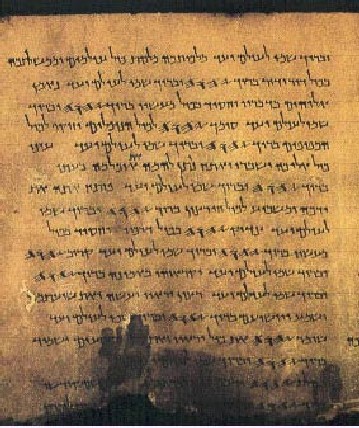Physical Properties of the Texts
The texts from Qumran are made of several pages of papyrus of leathersewn together. After these sheets were made, a scribe would mark off the lines and columns with a sharp utensil or with ink. To write on the scrolls, the scribes would use an ink made of soot, resin, oil and water. The scribes would practice their writing on small scraps of leather or broken pottery before writing on the scrolls as several of these leather and pottery pieces have been found in the caves at the Qumran site. Most of the Qumran scrolls were written in Hebrew although several have been found in Aramaic and Greek.
Language of the Scrolls
Many copies of the Hebrew scripts were stored at Qumran and were written very closely to the masoretic tradition which is much different than the translations done in Latin, Greek and Syriac. However, there is a variety in the style of the language usage evident in the texts. These different styles are similar to later versions of the Hebrew underlying the Greek Septuagint and others are similar to what becomes the masoretic text.
What were the Scrolls?
It is uncertain which books were considered canon as canonization lists have not been found. Several scrolls have been found that are considered commentary on other books found (called pesharim). much of the Hebrew Bible has been found at Qumran along with many different pseudopiographical works some which were created by this community. Among these are Joseph, Qahat, Amram, Moses, Joshua and Samuel. Also of note is that the oldest complete version of Isaiah was found at Qumran. This version is 1,000 years older than the next oldest version.
Also found in the Qumran caves are the histories of the community. The most significant of these texts are the Damascus Document and the bible commentaries (pesharim). These shed light on the enemies of the group who are mostly the kings of the Greeks, Romans, and the Nahum.
A number of hymns and liturgies were also found the Qumran site.
